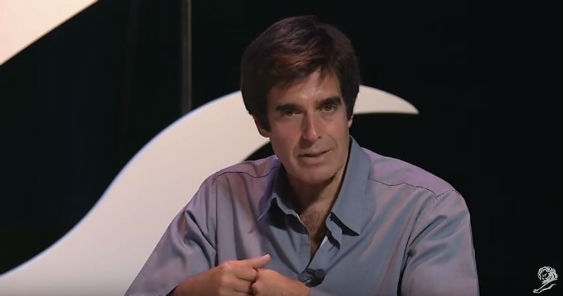MANILA – December 6, 2013 – Mobile was once again the hot topic among marketers, advertisers, media owners, and consumers, at the recent Mobile Festival 2013, held at the SMX convention center last November 25.
The festival featured five plenaries where industry experts shared their thoughts on different issues that all revolve around how mobile is transforming the business landscape.
The festival opened with a keynote speech by Mediaquest Holdings CEO Noel Lorenzana, who shared how the company is using mobile to enhance their content, for instance, through mobile viewing, second screen technology, or purchasing videos on demand with a handheld unit.
How mobile transforms business models
WeChat senior business development director Justin Sun followed, opening the first plenary on how mobile transforms business models, with his talk on how the WeChat app is reinventing messaging.
This was followed by a talk by Mobext global head Vali Lakshmanan, who emphasized the importance of the user experience.
"Content is not king. Experience is. Experience is benefit," Lakshamanan said.
Grabtaxi director Brian Cu then talked about how their mobile app is revolutionizing the taxi industry, making it safer and more accessible to the public.
His speech was followed by a talk from Fremantle Media Asia vice president for licensing Rushit Jhaveri, who talked about a successful integration of TV and Mobile.
Jhaveri spoke about transmedia storytelling, and having content available not just on the TV screen, but on the tablet and mobile phone as well. He also spoke about syncing content so that users can scan content in-between shows or during breaks.
"The way TV content is created and the way storytelling is done is changing. It’s no longer a way of just talking to the audience on television. You need to follow them across through the entire journey and catch them on as many different platforms as possible…when a viewer is interacting with your content across, it gives them a complete picture, and that’s when you tell a story completely," Jhaveri said.
Google country manager Narciso Reyes ended the first plenary by speaking on Google’s mobile-first perspective and how technology is driving change.
How mobile transforms retail and commerce
The second plenary was centered on how mobile is transforming retail and commerce.
Daniel Lee, director of digital projects for the APMEA region at McDonald’s talked about the fast-food corporation’s mobile success, and the importance of bringing the consumer from the real world, into the digital world, and back to the real world again.
SSI chief innovations officer Reuben Ravago then shared about how they are adapting mobile to modernize retail marketing and take the consumer’s shopping experience online, while at the same time driving them to visit the stores.
"Consumers changed the path to purchase," Ravago said, explaining that consumers no longer just see an item they like in a print ad, check it out in the store, and buy it. Instead, with mobile, they see an item they like, look it up online, search for better deals and cheaper alternatives, before they make the decision whether to buy the item or not.
eCOMMERCE Philippines director Chris Fong then talked about how the digital barcode enables mobile commerce, not only for smartphones, but for feature phones as well.
The Pitch
Following the second plenary and a lunch break was The Pitch, a competition between top students of the Mobile Marketing Academy. The competitors, challenged to set apart McDonald’s delivery service, presented their mobile solutions to the judges: McDonald’s senior vice president for Marketing Margot Torres, DM9JaymeSyfu chief creative officer Merlee Jayme, and Smart Communications head of digital Leah Besa-Jimenez.
The first team, Team Saucy, won the competition with their idea which was based on the principle that the faster you order, the faster you get your delivery. According to Jayme, the team won because they started with a great strategy, had a great execution down the line, and they really fleshed out their idea.
How mobile transforms marketing
Following the pitch was the third plenary, which revolved around how mobile transforms marketing.
Twitter’s international partnerships manager for India, MENA, and SEA Amy Saper then talked about how Twitter has changed the way that media organizations function and how advertisers interact with their target audience.
"Twitter has three basic attributes: it is live, public, and conversational," Saper said, explaining that advertisers should plan for scenarios that fire up social media, so that they can join the conversation.
Following Saper was Vserv.mobi’s vice president for business development Vikas Gulati, who talked about maximizing the impact of mobile advertising and winning over emerging markets, which he said are at the forefront of driving the mobile ecosystem.
Phalgun Raju, InMobi vice president and general manager for Japan, Asia Pacific Brand Business, then talked about how to be creative in mobile advertising through real-time analysis and tracking and interstitial ad formats, while Yoose founder and CEO Christian Geissendoerfer discussed location-based advertising, and how it is enabled by mobile.
Mobile video was the center of Vdopia head of Southeast Asia sales Mimmie Ong, who emphasized the need for mobile experts to bring mobile video out of its nascent stage.
"Mobile is not a tiny TV, magazine, or billboard. It’s a new world," Ong said, stressing that mobile advertisers need to be extremely creative to maximize the benefits of mobile video.
StrikeAd general manager APAC Carl Costa introduced real-time bidding, a method of selling and buying online display advertising in real time, through ad impressions.
Costa shared that around 30 percent of online display advertising in Europe and the United States is bought through real-time bidding, while in Asia, the number is lower at three to five percent.
"It gives you efficiency," Costa said of real-time bidding. "You only bid and buy on impressions that you need so you’re not wasting any inventory. It gives you transparency in terms of, you can see the sites and apps and the imagery that you’re buying on. Also, it gives you scale, so you can get massive reach running a campaign just through one single platform, one single campaign impression."
EasyTaxi regional co-founder and CEO Mario Berta and Philippine vice president Paul Malicki then talked about bringing a global app to the local market, and the importance of giving it a local flavor.
How mobile transforms media
The following plenary discussed how mobile transforms media. Smart Communications’ Besa-Jimenez opened with a talk on how mobile and media converge. She was followed by Samsung Asia’s head of lifestyle & social, content & services Maya Hari, who discussed the evolution of media along with the new mobile lifestyle.
MillwardBrown China’s managing director for the Beijing office Albert Sim then discussed Cross Media analytics, while TV5 new media vice president Shiela Paul talked about the second screen experience, and how to create content for different screens.
How mobile transforms loyalty and customer care
The final plenary opened with SAS Institute Philippines country operations director Maxie Ventura-Garin talking about how big insights on the new consumer can drive loyalty.
The plenary ended with Motech president Eugene Naguiat talking about how mobile enables personalized customer care.
The event ended with final remarks from Hans Roxas-Chua, co-director of the International Institute of Digital Marketing Program.





